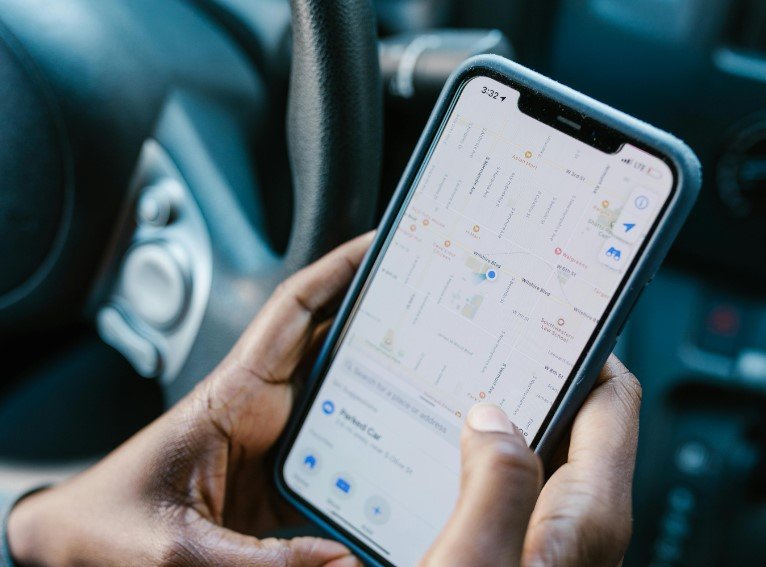Recent findings from the AAA Foundation for Traffic Safety reveal that smartphone apps can play a pivotal role in reducing risky driving behaviors, such as speeding and rapid acceleration, but the battle to curb phone use behind the wheel remains ongoing.
The intersection of technology and road safety has become a significant focus as smartphone apps are increasingly being used to encourage drivers to adopt safer habits. The latest research by the AAA Foundation for Traffic Safety, published earlier this month, sheds light on how this technology can help mitigate behaviors like speeding, hard braking, and rapid acceleration. However, when it comes to reducing distracted driving, particularly phone use, the technology still faces hurdles.
The Power of Smartphone Apps in Shaping Driver Behavior
Smartphone apps have increasingly become part of the conversation around road safety. According to the research, apps that offer feedback and incentives can influence drivers’ behaviors in a positive way. The study, conducted over 12 weeks, involved over 1,400 participants, all of whom were monitored for dangerous driving patterns such as speeding, rapid acceleration, and hard braking.
David Yang, the president of the AAA Foundation, expressed the importance of addressing these risky driving habits: “Speeding, aggressive driving, and distraction are known to contribute to a significant number of crashes.” He added that reducing these behaviors could greatly impact traffic safety, ultimately reducing injuries and fatalities on the road.

The study examined several different approaches. Drivers were split into four groups, each receiving a different form of feedback. Some were given weekly feedback on all monitored behaviors, while others focused on improving one specific behavior. The results indicated that feedback, whether general or behavior-specific, had a tangible effect on improving driving practices.
Key Results: Smartphone Apps Deliver Real Change
The research highlights some promising statistics, particularly when it comes to reducing aggressive driving behaviors.
-
Speeding was reduced by up to 13%.
-
Hard braking incidents dropped by up to 21%.
-
Rapid acceleration saw a reduction of up to 25%.
These figures suggest that smartphone apps are indeed effective at fostering safer driving habits. Interestingly, the feedback was not just helpful during the study period. When participants were monitored for an additional six weeks without any feedback or incentives, they continued to drive more safely, indicating that the behavioral changes had a lasting impact.
While these improvements are promising, there is one major hurdle that remains. Handheld phone use, despite being one of the most dangerous distractions on the road, did not see any improvement during the study period. Researchers believe that participants might have felt they were driving more safely based on the initial scores they received for this behavior, leading to less incentive to change.
Behavioral Science Behind Smartphone Feedback
What makes these apps effective in changing behavior? The key lies in the feedback mechanism. By providing drivers with real-time information about their driving habits and offering incentives for safer behavior, these apps make drivers more aware of their actions. The research suggests that this kind of positive reinforcement is more effective than punitive measures, which have traditionally been used to discourage dangerous driving behaviors.
For instance, drivers who were given specific goals to focus on—such as reducing speeding—responded well to the feedback and showed more significant improvements compared to those who received general feedback. The research also revealed that many drivers found the ability to earn money or rewards for safe driving particularly motivating.
Challenges: The Persistent Issue of Distracted Driving
Although the research shows great promise for smartphone apps in reducing certain risky driving behaviors, distracted driving remains a significant issue. The study found that drivers’ use of handheld phones did not improve during the 12-week period, despite receiving feedback. This suggests that while drivers might be receptive to changes in speeding or hard braking, the habit of using a phone while driving is far more entrenched.
Jake Nelson, the AAA’s director of traffic safety advocacy, remarked on this challenge: “It’s encouraging to see that many individuals stuck with safer habits even after the study, but distracted driving remains a tough nut to crack.” He acknowledged that the challenge lies in changing the mindset around phone use, which continues to be one of the most pervasive distractions behind the wheel.
The Future of Safer Driving Through Technology
The success of smartphone apps in altering driving behaviors raises important questions about how technology can further contribute to road safety. Could a combination of AI-driven feedback and real-time alerts become a new norm for safer driving? Would further advancements in app design help reduce phone use behind the wheel?
The study highlights the potential for developers to refine these apps by improving participant engagement, tailoring feedback, and introducing more nuanced incentive structures. As the technology evolves, the possibility of creating smarter, more effective apps to combat distracted driving could be on the horizon.
What’s Next for Smartphone-Based Road Safety?
While smartphone apps have shown great promise in changing driver behavior, it’s clear that there’s still work to be done. The focus now is on how to make apps even more effective, especially in addressing the widespread issue of distracted driving. As the technology improves and evolves, there may come a time when these apps become an essential part of road safety efforts—transforming how we drive and making the roads safer for everyone.








